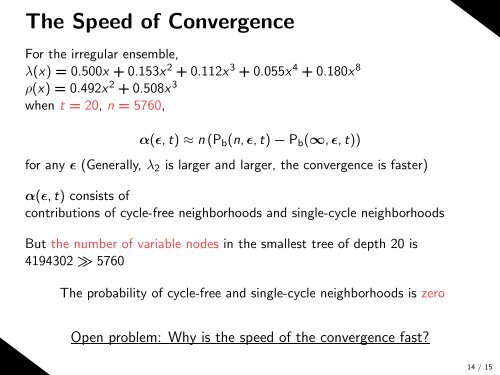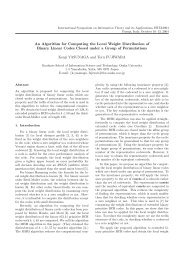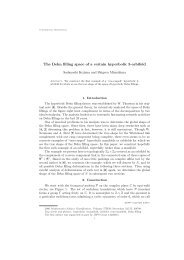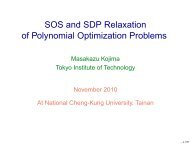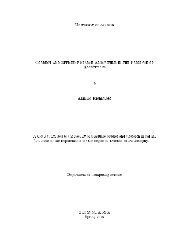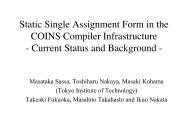Finite-Length Analysis of Irregular Expurgated LDPC Codes under ...
Finite-Length Analysis of Irregular Expurgated LDPC Codes under ...
Finite-Length Analysis of Irregular Expurgated LDPC Codes under ...
You also want an ePaper? Increase the reach of your titles
YUMPU automatically turns print PDFs into web optimized ePapers that Google loves.
The Speed <strong>of</strong> Convergence<br />
For the irregular ensemble,<br />
λ(x) = 0.500x + 0.153x 2 + 0.112x 3 + 0.055x 4 + 0.180x 8<br />
ρ(x) = 0.492x 2 + 0.508x 3<br />
when t = 20, n = 5760,<br />
α(ǫ, t) ≈ n (P b (n, ǫ, t) − P b (∞, ǫ, t))<br />
for any ǫ (Generally, λ 2 is larger and larger, the convergence is faster)<br />
α(ǫ, t) consists <strong>of</strong><br />
contributions <strong>of</strong> cycle-free neighborhoods and single-cycle neighborhoods<br />
But the number <strong>of</strong> variable nodes in the smallest tree <strong>of</strong> depth 20 is<br />
4194302 ≫ 5760<br />
The probability <strong>of</strong> cycle-free and single-cycle neighborhoods is zero<br />
Open problem: Why is the speed <strong>of</strong> the convergence fast<br />
14 / 15


